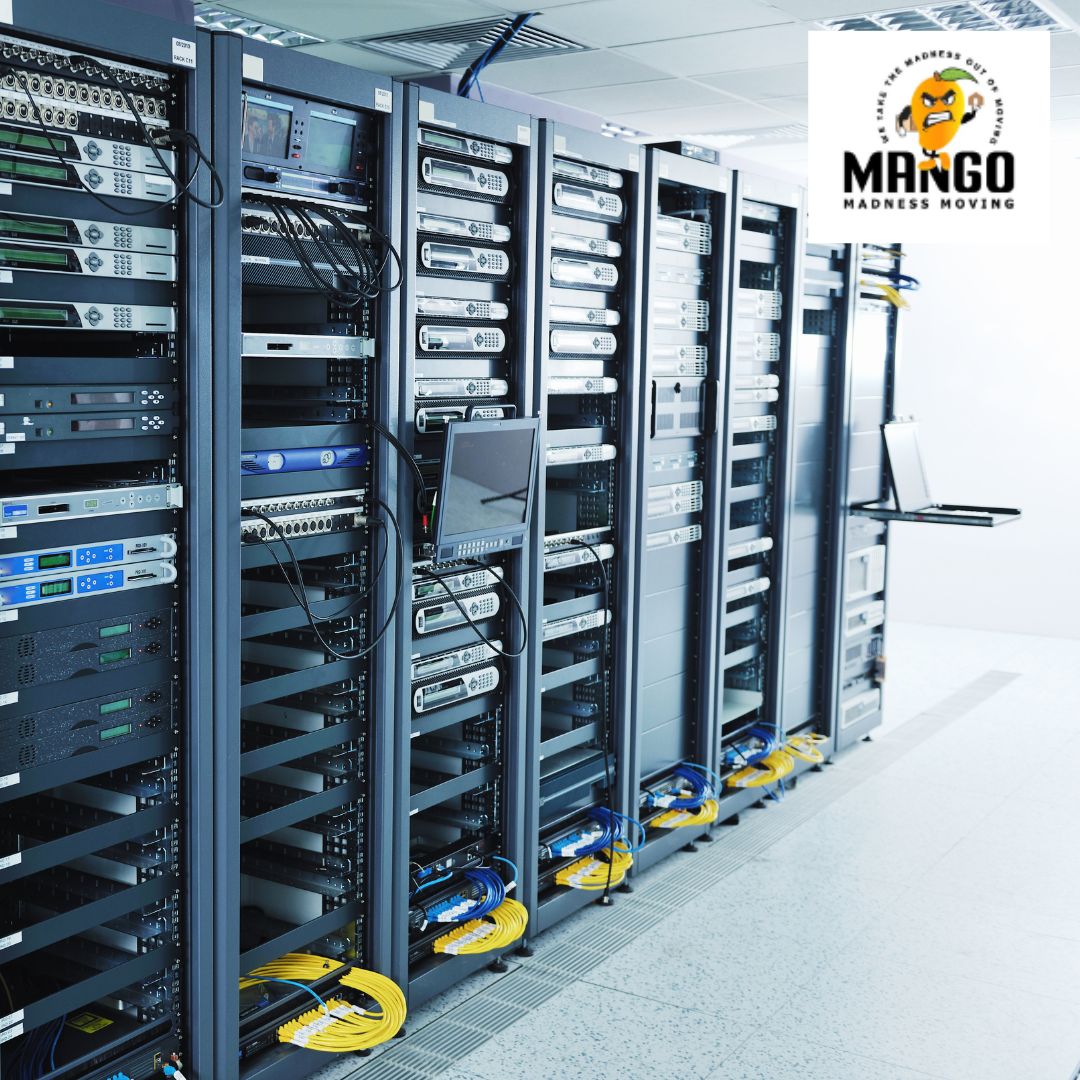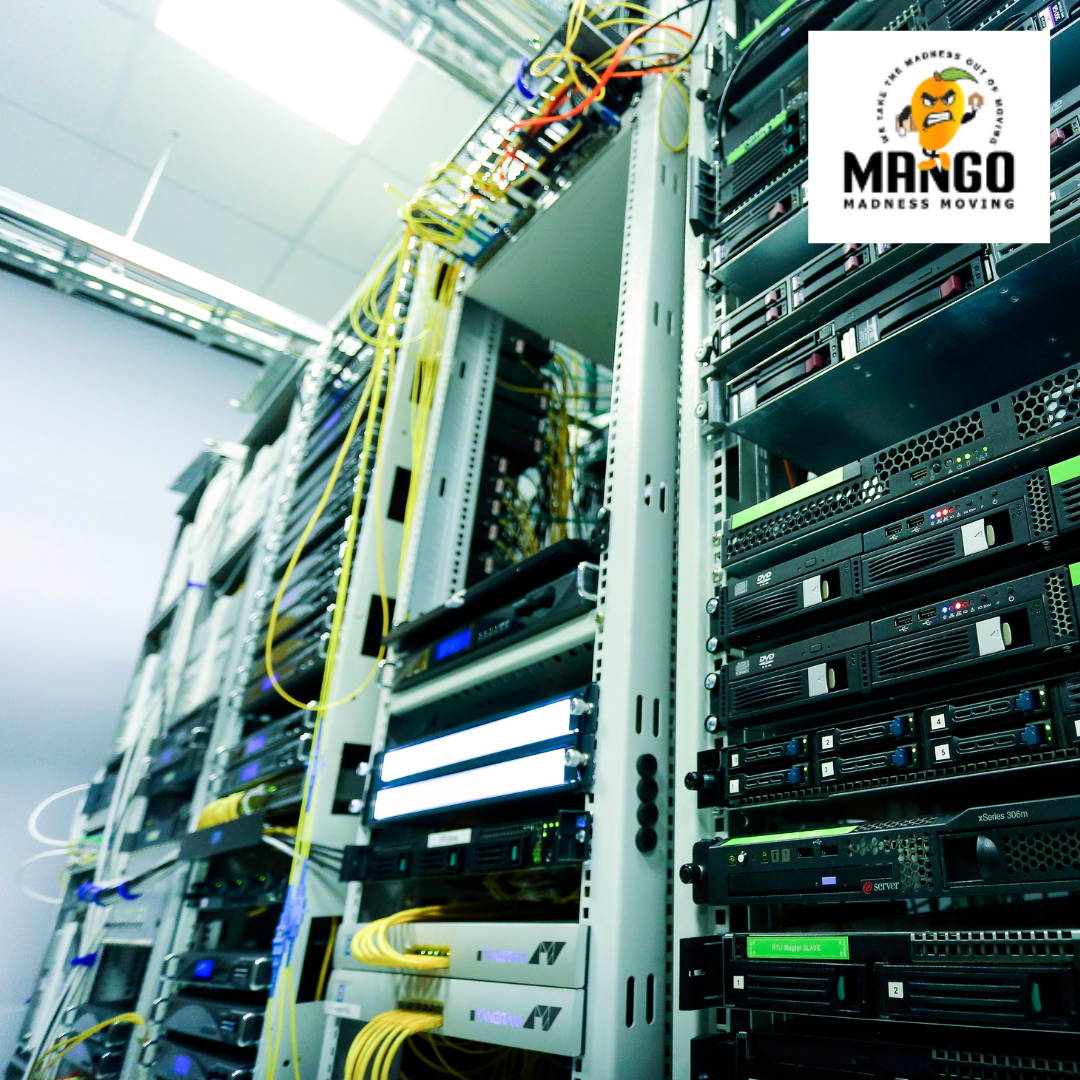Efficient Server Moves in Phoenix: Practical Tips from Mango Madness Moving
Messa, United States - August 12, 2025 / Moving Service Marketing Company /
Relocating servers and other sensitive IT equipment involves far more than simply packing and transporting them. In Phoenix, where high temperatures and dust can present additional challenges, careful preparation is essential to protect systems and reduce downtime. Each stage—from properly shutting down equipment to setting it up again in the new location—must be handled with precision to prevent costly disruptions. In this guide, Mango Madness Moving shares practical tips and strategies to help ensure a smooth, safe, and efficient server relocation in Phoenix, AZ.
Preparing for Server Migration
The first step in preparing for a server migration is conducting a comprehensive inventory and audit. Cataloging all server components, software applications, and stored data not only provides clarity about existing assets but also highlights what specifically needs to be moved. This process reduces the likelihood of overlooked items that could cause operational delays later. Tools such as Microsoft System Center Configuration Manager can help automate much of the inventory process, creating an organized and complete asset list with minimal manual effort. Leveraging these technologies makes it significantly easier to track and account for each component before the move begins.
Once the inventory is complete, the next priority is identifying possible challenges that could occur during relocation.
Step II – Risk Assessment
A thorough risk assessment is a critical part of migration preparation. This process identifies potential vulnerabilities that could compromise the success of the project. Common risks include data loss during transfer, hardware malfunctions, and cybersecurity threats. According to a 2024 Gartner report, 32% of organizations experience unplanned delays in server migrations due to insufficient preparation, an indication of why detailed planning is essential.
Mitigation strategies should be tailored to address each identified risk. For example, creating multiple data backups can safeguard against loss, while allocating additional resources for potential troubleshooting ensures the team is prepared for unexpected technical issues. A proactive approach to risk management can prevent minor setbacks from becoming major operational disruptions.
Step III – Establish Timeline
A well-structured timeline keeps every part of the migration aligned. Breaking the process into defined phases—initial preparation, transition, and post-migration review—allows for more accurate tracking and adjustment as needed. Each phase should include measurable objectives and deadlines to help maintain progress.
Flexibility is also important. While maintaining schedules is essential, building in fallback periods can help absorb the impact of unexpected delays. Whenever possible, plan migrations during off-peak hours, such as weekends, to reduce operational impact. These scheduling considerations minimize downtime while ensuring the migration remains on track.
By following these foundational steps, organizations create a clear structure for the migration process, paving the way for more focused strategy development.
Strategy Development and IT Needs
Developing an effective migration strategy starts with establishing clear objectives. These goals—whether they involve reducing costs, improving performance, or enhancing security—will guide every decision made throughout the relocation process. For example, if the main goal is cost reduction, all vendor selections and equipment choices should reflect that priority.
Once objectives are established, assessing the current IT infrastructure becomes the next essential step.
Assess IT Infrastructure
While evaluating an existing system may seem straightforward, it is important to conduct a detailed review of servers, applications, and stored data. This assessment identifies any areas that require upgrading or reconfiguration before relocation. Tools like SolarWinds Network Performance Monitor can provide detailed insights into network performance, making it easier to detect potential compatibility issues in the new setup.
Having a complete understanding of the current infrastructure ensures that the migration proceeds without unexpected interruptions caused by outdated hardware or unsupported applications.
Create a Detailed Timeline
A detailed project timeline helps maintain order throughout the entire migration process. Each stage should have set milestones, with clear roles assigned to team members. Building in extra time for potential delays is advisable, as technical complications often arise unexpectedly.
Regular progress reviews during the migration process allow teams to identify issues early and make adjustments without derailing the entire schedule. This balance between efficiency, safety, and quality is key to a successful transition.
Security Measures for Server Moves
Protecting data during migration requires both digital and physical safeguards. Encryption is essential to prevent unauthorized access to sensitive data, while strong physical security measures ensure servers remain protected during transportation.
Implementing Encryption
Advanced encryption protocols, such as AES-256, provide a high level of protection for data during transfer. Even if intercepted, encrypted data remains inaccessible without the proper decryption keys. A 2023 TechRepublic case study documented a financial company’s successful implementation of AES-256 during a server migration, resulting in zero security breaches.
Physical Security
Physical safeguards are equally important. Transporting servers in tamper-evident containers reduces the risk of unauthorized interference. Choosing a logistics provider experienced in handling IT equipment—particularly those offering “white glove” services—ensures servers are handled with the necessary care and precision.
Implementing GPS tracking during transit allows real-time monitoring, ensuring equipment follows the planned route without deviation. These measures combine to form a comprehensive approach to both digital and physical security.
Techniques for Smooth Transitions
Smooth server migrations are the result of careful planning and proven techniques. Conducting test migrations in a controlled environment allows teams to identify and correct issues, such as network latency or compatibility errors, before the actual move.
A phased rollout approach further minimizes risk. Starting with non-critical systems allows the migration team to troubleshoot and validate performance before moving critical components. This method preserves business continuity and limits operational disruptions.
After migration, verifying the final setup with a detailed checklist ensures that all systems function correctly and efficiently.
Data Protection and Backup Services
Data protection is central to any migration plan. Without it, a single error can result in severe operational and financial losses.
Backup Creation
Full backups should be created for all servers and configurations before any migration activities begin. Backup solutions such as Veeam Backup & Replication provide reliable, automated protection against human error and unexpected failures.
Secure Backup Storage
Using multiple backup storage methods—both physical and cloud-based—reduces the risk of losing data due to a single point of failure. Ensuring these storage solutions meet industry security standards and include encryption further strengthens protection.
Data Integrity Checks
Performing integrity checks verifies that backup data remains accurate and free from corruption. Tools such as HashTool can confirm file integrity through checksum verification. Regular checks, even after migration, help maintain ongoing trust in backup systems.
Post-Migration Checklist
A thorough post-migration checklist ensures that the transition is complete and successful. Performance monitoring tools can detect delays or issues that require immediate correction.
Key actions include:
- Verifying network connectivity.
- Confirming data integrity with checksum tools.
- Testing applications for proper functionality.
- Ensuring all security measures remain active.
Stakeholder Communication
After all technical checks are complete, stakeholders should be informed of the migration’s completion and any process changes. A company-wide update, followed by opportunities for feedback, fosters transparency and collaboration. Hosting a Q&A session or briefing helps teams adapt quickly to the updated systems.
Expert Collaboration for Success
Working with experienced professionals can significantly reduce risks and improve migration efficiency. External consultants bring specialized knowledge of infrastructure compatibility, downtime prevention, and risk management.
A case from 2023 illustrates this benefit: a mid-sized technology firm avoided significant downtime and technical issues by partnering with a migration consultancy that tailored its strategies to the firm’s specific needs.
Benefits of Engaging Experts
Organizations that hire migration specialists often experience fewer post-move complications and shorter downtimes. By following best practices recommended by experienced professionals, companies can avoid costly mistakes.
Practical Tips for Successful Collaboration
When working with consultants:
- Clearly define the scope of work.
- Establish a shared project timeline.
- Schedule regular check-ins.
- Document every stage of the process.
These practices ensure a productive working relationship and a smoother overall migration.
Relocating servers in a city like Phoenix requires a combination of technical expertise, detailed preparation, and strong security measures. From initial risk assessments and infrastructure evaluations to secure backups, test migrations, and post-move verifications, each step plays a crucial role in protecting data and ensuring minimal downtime. Incorporating both in-house planning and expert collaboration not only streamlines the process but also helps maintain operational stability long after the migration is complete. By applying these structured, practical strategies, organizations can transition their critical IT systems confidently and efficiently.
Why Choose Mango Madness Moving for Your Data Migration Needs
At Mango Madness Moving, they understand the importance of a successful data migration for your organization. That's why they offer comprehensive services to ensure a smooth and efficient transition of your critical IT systems. With their in-house planning and expert collaboration, you can trust them to protect your data and maintain operational stability throughout the entire process. Contact them today at 480-372-5258 to learn more about how they can help with your data migration needs. Trust Mango Madness Moving to make your Phoenix move stress-free and seamless.

Contact Information:
Mango Madness Moving LLC
3433 E Coralbell Ave Mesa AZ 85204
Messa, AZ 85204
United States
Austin Frazier
(480) 973-0814
https://mangomadnessmoving.com/



